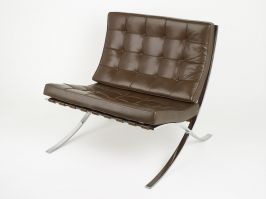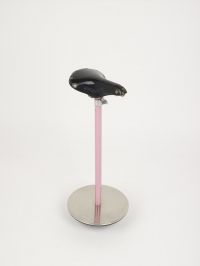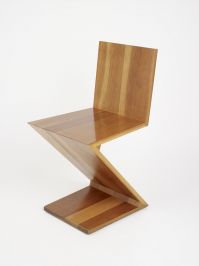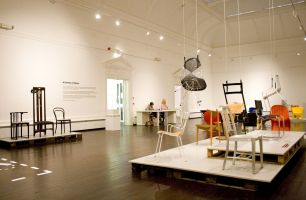A Century of Chairs
An exhibition of twentieth century chairs from the collection of the Design Museum in London
This exhibition has come to Storey Gallery directly from its previous showing at the 2011 Cheongju International Craft Biennale in Korea where it attracted more than 420,000 visitors.



The chair has a simple function - to elevate and support the sitter whilst they eat or read, work or lounge. A chair usually has a seat, four legs, and a back. A chair without a back is a stool, when raised up this is a bar stool. A chair with arms is an armchair.
The different ways we use a chair, along with technological developments and cultural shifts, have influenced the vastly different designs found in this exhibition. As long as a chair fulfils its intended function, the designer is able to create it in any form, using any material and process available.
This scope for creative interpretation has made the chair a very desirable project for designers to undertake. They have transformed the simple chair from a humble resting place into a glamorous, and much sought after, sculptural commodity, and a design icon. Chairs fill the archives of design museums across the world, demanding more cultural space and higher prices than any other piece of furniture.
In the early 1900s, expectations of what a chair looked like were based on traditional cabinet-making techniques. Impressionism had made Parisian café culture ‘de rigueur’, creating a demand for café style seating similar to that seen in paintings by Monet, Renoir, and Degas. In the 1920s, designers such as Le Corbusier, Charles & Ray Eames, and Marcel Breuer, used tubular steel, perfectly capturing the Modern Movement’s machine-age aesthetic. The Panton chair expresses the technocratic optimism of the 1960s, whilst Jane Atfield’s RCP2 Child’s Chair reflects our current desire to develop sustainable and ‘low impact’ design.
This exhibition encourages us to consider the significance of the chair. It illustrates how designers have responded to shifts in the way we choose to rest our legs, and how they have made use of new materials and technologies to create beautiful, sculptural forms.
Exhibition at Storey Gallery produced by Suzy Jones, Programme Manager


There is a series of talks related to this exhibition by David Mawdsley, David Grimshaw, and Harvey Wilkinson.
And an event: Dancing with Office Chairs
Live performance 31 March
Venue: Storey Gallery, The Storey, Meeting House Lane, Lancaster LA1 1TH
Dates: 28 January 2012 – 7 April 2012



